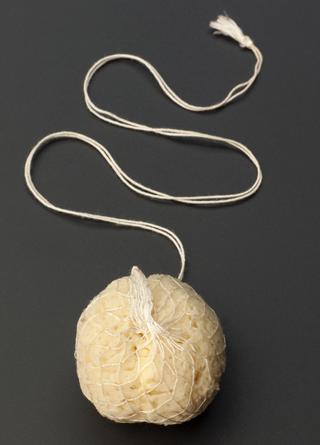

Intra-uterine stem pessary, consisting of catgut loop and bone, a stage in the evolution of the Grafenberg Ring, 1925-1935
Stem pessaries are intrauterine devices (IUDs). They were a common gynaecological treatment in the late 1800s and early 1900s. They were also used as a contraceptive. An IUD works after conception. It stops a newly fertilised embryo implanting and growing in the lining of the uterus. Stem pessaries consisted of a rubber, metal, or glass stem attached to a cup or button to hold the stem upright and prevent it becoming lost in the uterus. This early intrauterine stem pessary consists of catgut loop and bone. It evolved from the Grafenberg Ring. This popular IUD was developed by German gynaecologist Ernst Grafenberg (1881-1957) in the 1920s. Early examples were made of silkworm gut and silver wire.
Details
- Category:
- Obstetrics, Gynaecology & Contraception
- Collection:
- Sir Henry Wellcome's Museum Collection
- Object Number:
- A606484
- Materials:
- stem, catgut and button, bone
- Measurements:
-
overall: 40 mm 20 mm, .01kg
- type:
- intra-uterine device
- credit:
- Marie Stopes Memorial Foundation




